
Although known as one of the world’s most expensive travel destinations and one of the most visited cities in the world, London still has plenty of free things to do. That includes the kind of London Museums that have the kids bright eyed and excited.
Knowing that most of these are national and municipal institutions might make you think that they are all the same, but the contrast of character and variety of interest is enormous.
Read on for a taster of each to help you plan your time in London. Give your family a bunch of happy memories and rich discoveries from the best free London museums for kids.
Best Free London Museums for Kids by areas
Exploring London museums is a great way to tear your kids away from the television and let them learn while having fun at the same time.
They feature legendary exhibits such as the Rosetta Stone, Van Gogh’s Sunflowers, the Parthenon frieze, Darwin’s specimens, Apollo 10, as well as the largest portrait collection in the world and the ruins of the London Wall from 200 A.D.
London is home to over 200 museums, each with a different angle on either ancient or modern arts and sciences. Most have both permanent and temporary exhibitions, and nearly all are accessible for disabled people and are child-friendly.
Tip:- Best Exhibitions
Believe it or not, these Museums and Galleries are also popular with Londoners. The way they keep this fresh is by running temporary exhibitions, and lectures. But these are usually payable. The most investment in presentation and content, the best design, and the most famous exhibits are almost all in free permanent exhibition halls. So unless you are only in London because of some specific temporary exhibition, then give the temps a miss and enjoy the freebies.
In this article today, we are going to share the best free museums in London that we have found during several visits to the city. The list is sorted by districts where the museums are located. This way, it will be easy for you to schedule the visits in with your wandering in the British capital.
The British capital knows that tourism is good for it, and it knows that its heritage is a significant draw. In an enlightened long-term policy, London museums are beautifully designed, well funded and free. These are the museums that our kids dont want to leave at the end of the visit.
Tip:- Food
Although access to the museums are free, their cafeterias and restaurants tend to be expensive. London is full of good places to eat and parks to take picnics, so if you are on a budget, it’s a good idea to plan museum hopping and food as separate activities. After all – you can almost always get back into the museums after lunch. They are free!
Tip:- How to get about.
As a kid exploring London, city transport for me was always either on foot or diving into the London Underground rail system (known as the “Tube”) and looking for a wall map. Buses were far too complex and arcane. Now, so long as you have data on your smartphone, Google maps will give you options of walking, bus or tube. If somewhere is too far to walk, our favourite is almost always the bus. Sit upstairs in a London double decker and enjoy the city from one of its best viewpoints. Buses are covered by the Oyster card (and by contactless phone banking) and are very reasonably priced.
Great museums in Bloomsbury and Holborn
Bloomsbury is located paradoxically at the east end of the West End, north of Oxford Street, South of Euston Station. It is a land of universities, squares of houses around beautiful communal gardens, small shops and boutique hotels.
Grant Museum of Zoology
We found this by chance as we were walking to the West End from Euston Station. What a gem! It is part of University College (UCL) but open free to the public.
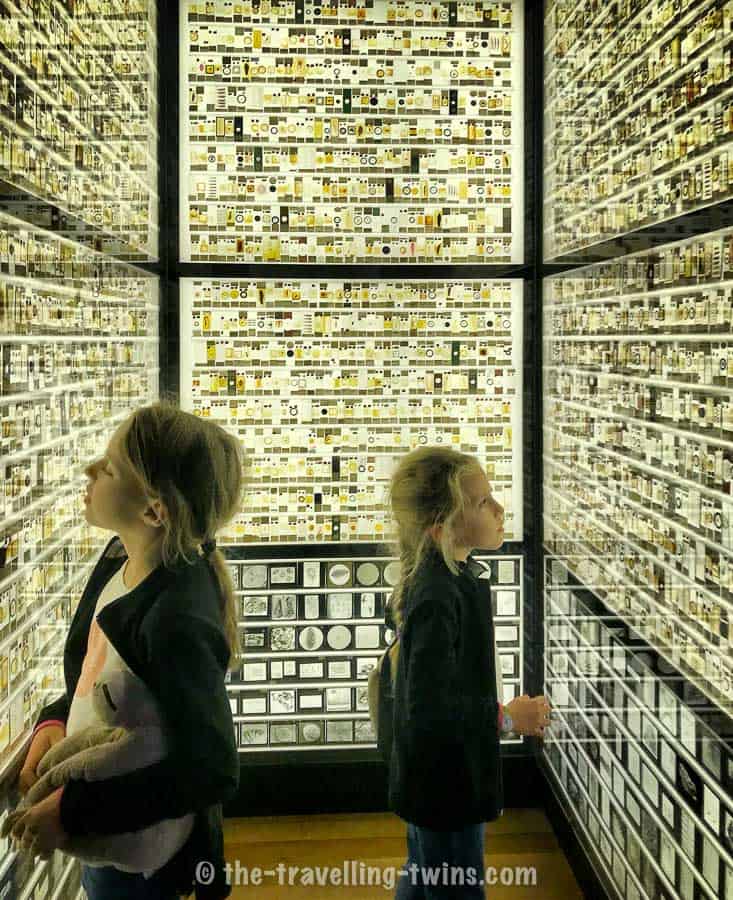
This is the kind of place my kids love. In fact I think all kids love to get up close to skeletons and skulls. Here in one big room you will find everything from elephants to the tiniest lizard in a labyrinth of wooden and glass cases. The man on the desk told us that UCL has more animal specimens that the Natural History Museum in Kensington, but with only one room for display, you get here the cream of the collection and with no crowds, no queues.
There is an activity sheet for kids which involves finding some of the animals on the display. Very interesting and more tricky than we expected. We all had fun. A nice touch is a central table where you can sit to make notes or even have a homeschooling lesson.
Open Hours: Monday to Saturday afternoons 13.00 to 15:00 check the website in case of holidays and closures
Nearest Underground Station: Euston Square.
Right in the middle of Bloomsbury is the British Museum:
British Museum
Standing in a proud neoclassical building, the British Museum is the place to come in London for a grand view of the ancient world as seen through the lens of the British Empire. It contains an unrivalled collection of global treasures.
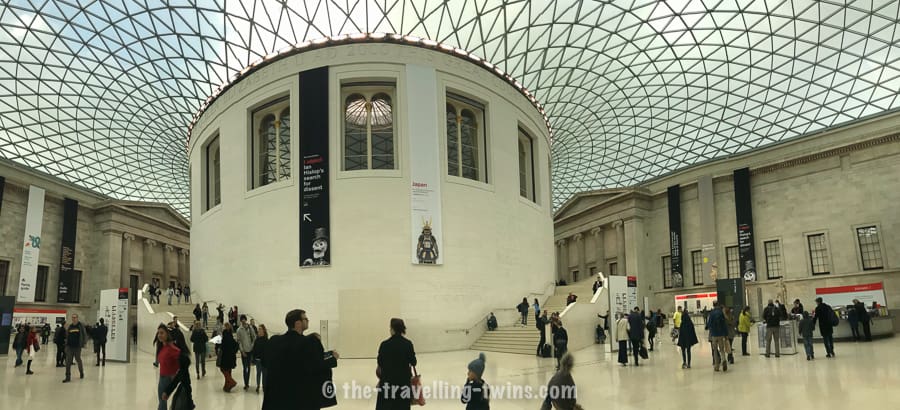
But don’t forget that word British in the title. When I came to London with colleagues from my office in Kazakhstan a decade ago, I realised that there is almost no mention here of Central or Eastern Eurasia north of Austria, India and Burma. The collections are only from places within the Empire and from countries “Discovered” and “Explored” by the old British aristocracy. The Parthenon Sculptures are probably the most famous of these. Brought from Athens by Lord Elgin at the turn of the nineteenth century, their acquisition was described even at that time by Lord Byron and others as “vandalism and looting.” The morality of this collection was debated in the British Parliament then and has remained controversial ever since.
So the British Museum is an old fashioned kind of museum, containing treasures displayed in and out of glass boxes. Is it relevant to kids? Well, surprisingly, yes very much so. It is always a joy to me to see how much my kids love these places as they rush between the exhibits and me to describe in terms of wonder what they have seen and read. The memory of these displays also gives some grounding to my homeschooled kids later when they write reports and presentations of history.
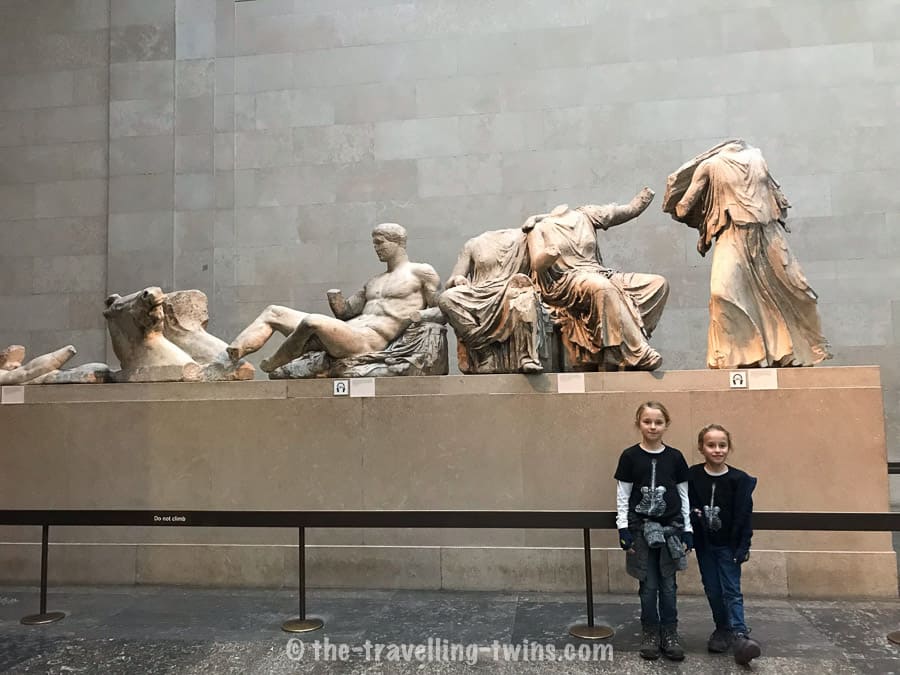
For me though, the pleasure of the British Museum is principally in the Portland stone architecture of the central courtyard as restored in the late twentieth century under a modern glass dome. Here the central drum of the reading room (once the “British Library” with a copy of every book published in Britain) is topped by a very classy wine bar and restaurant. This is one museum eatery that is worth the money for its design as much as for the food.
Open Hours: Daily from 10 A.M to 5:30 PM and on Fridays from 10 AM to 10:30 PM. The museum is closed on December 24-26 and January 1.
Closest Underground Stations: Tottenham Court Road and Holborn
A few blocks to the south east, from the British Museum and easily walkable, is Holborn. Here in Lincoln’s Inn Fields is a very different kind of treasure trove, the John Soane House.
Sir John Soane’s Museum
Also a museum displaying an old collection within a fascinating building, the John Soane House could not be more different from its Bloomsbury neighbour.
This was the private house of the Architect to the Bank of England and quite substantially remodelled by him. His time was the British Regency (early nineteenth century and generally characterised by delicacy and lightness of design) but his style was unique and combined heavy proportions with filtered natural light from above.
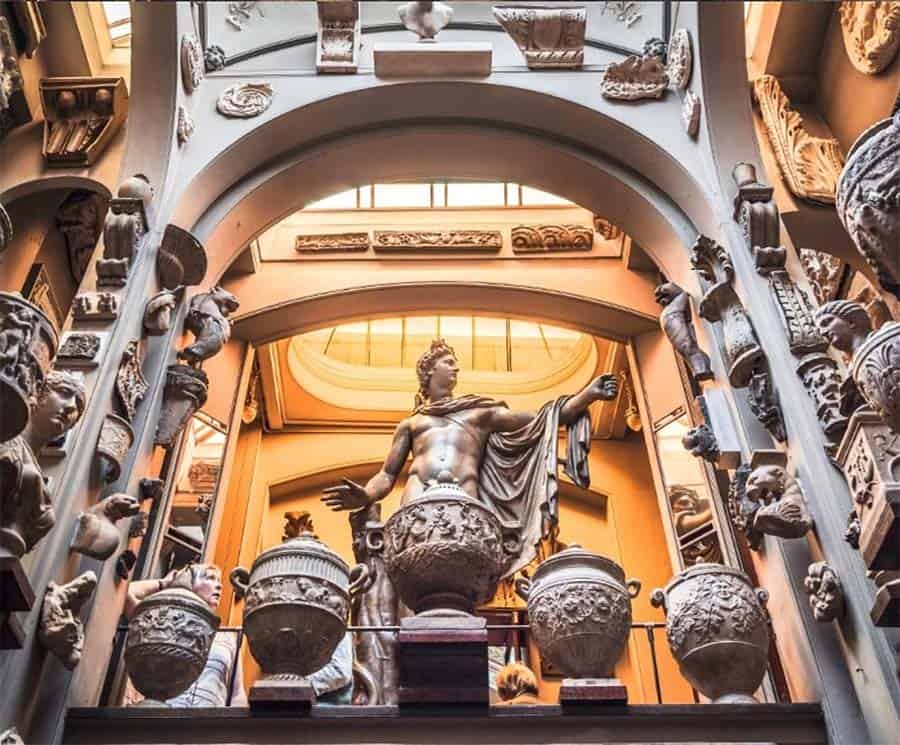
But the major fascination of this museum for our family is with the contents. To call this house an Aladdin’s cave is an understatement.
You may know that our twins have made a lifetime study and practice of the art of Thingfinding. I think John Soane would have been their hero. This house is absolutely crammed with his lifetime of collections, principally of sculpture and painting but also of everything beautiful and intriguing available in his time. In fact it’s not one house but three. By the end of his life he had bought, knocked together, and substantially remodelled three adjacent houses in this terrace and they are all chockablock with fascinating stuff.
There are ways in which this house of an architect/collector reminded us of Jim Thompson’s House in Bangkok, although two more different structures you could hardly imagine.
Tips and Wrinkles: Sir John Soane’s Museum is so full of his collections that there is limited room for humans! Although the tickets are free, you must have one in hand before you visit. The ticket will give you a timed slot, so book in advance – and this also means you probably won’t be able to nip out to eat and get back in. Get your tickets here- Sir John Soane’s Museum https://www.soane.org/your-visit
Open Hours: Wednesday – Sunday 10 AM- 5 PM
Closest Underground Station: Holborn
The Wallace Collection
A mile or so west of Bloomsbury in the smart streets and squares between Regents Park and Oxford Street you can find The Wallace Collection facing Manchester Square. This was another unexpected random find for us, and interesting not only for a great collection of ancient armour, weapons and paintings, but also for the chance to see inside one of these great West End houses without having to pay the fees of the famously expensive private doctors in nearby Harley Street.
Hertford House, Manchester Square.
The City
A fair way distant from other museums featured here is the City of London. But aren’t they all in the City? Well if you don’t know London then we should explain that to Londoners “The City” refers to what is now the financial centre of glittering tower blocks gathered around St Paul’s Cathedral. You will be visiting St Paul’s of course? Well the Museum of London is nearby.
Museum of London
Just north of St Paul’s, The Museum of London could better be described as a museum about London. As the seat of power of the biggest Empire ever to have existed, London was once both the richest and the biggest city in the world. This museum describes how that came about since prehistory. Then it also shows how it has continued to develop since that peak.
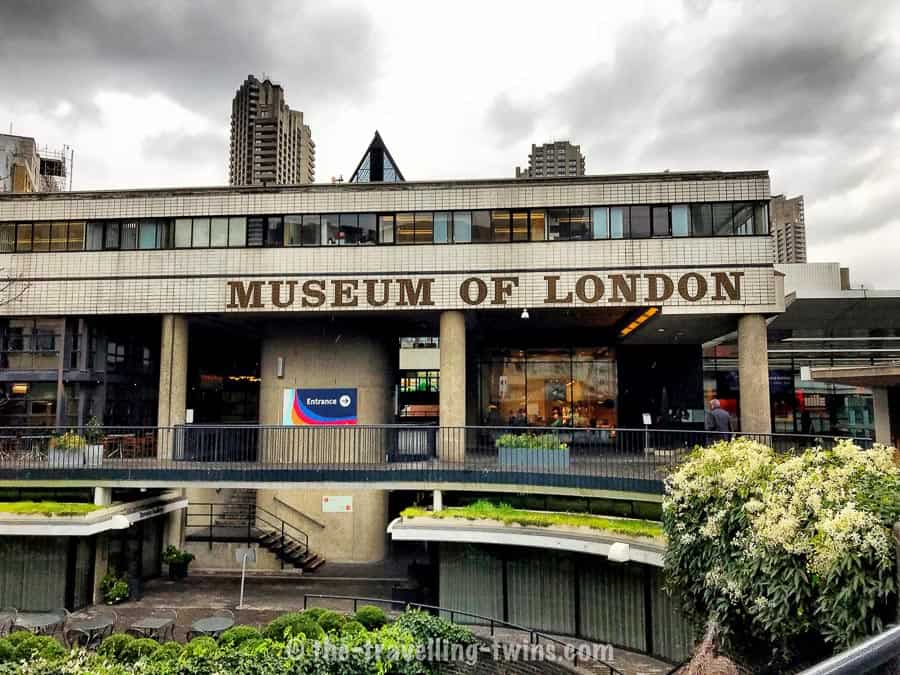
This museum has some fascinating angles on the present day – a kid-luscious favourite being the disgusting “Fatberg!” and the surrounding story of London’s sewers. Also some other perennially interesting-to-(my)-kids aspects of life in London include animals from the exotic (elephants) to everyday (pigeons and bees)
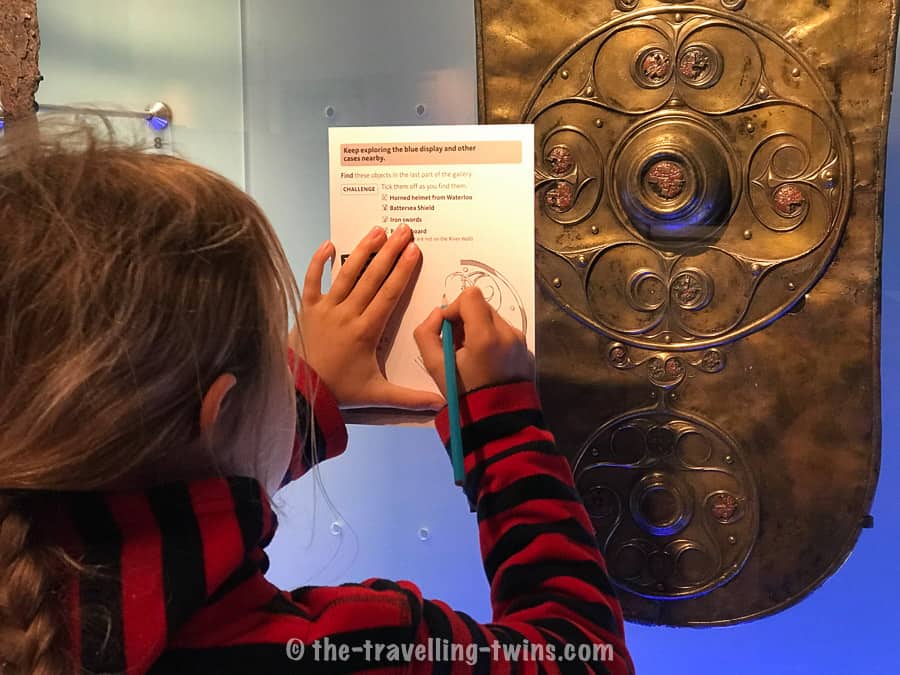
The museum sits in the shadow of the Barbican tower housing estate. One of several architectural icons of modern London which finds its way into both the “most loved” and “most hated” lists.
Open Hours: Open daily from 10 AM to 6 PM
Closest Underground Stations: St. Paul’s and Barbican
Bank of England Museum
Here in the heart of London’s financial district, you can learn about the history of banking since the end of the seventeenth century, how and why paper money was invented and how notes are designed and issued. There are some good displays explaining how the Bank of England works today. While here, you can take a selfie in the gold vault corridor, see banknotes through the years, and feel the weight of a solid gold bar.
Open Hours: Open Monday – Friday from 10 AM to 5 PM
Closest Underground Stations: Bank
The East End and Greenwich
The Docklands of London, like those of other cities, were once rough areas where no one would go without expecting to be robbed or worse. They also had a gritty romantic charm as the home of Cockney rhyming slang and the BBC’s soap opera “Eastenders”. However in preparation for the Millennium, Docklands was given “The Dome” (now the O2 Arena), the infamous Isle of Dogs became a cool land of converted loft apartments, and Canary Wharf was established as the focus of commercial investment for the Capital. Greenwich – establishing the meridian line of longitude for the whole globe – is just across the river, accessible by pedestrian tunnel. While here you can also believe it or not – visit a Farm
London Docklands Museum – Canary Wharf
Like the Museum of London, Docklands Museum is an introspective look at the history of its location and set in a modern cityscape – though the Canary Wharf redevelopment is forty years younger than the Barbian surrounding the Museum of London. The Docklands Museum is arranged chronologically and tells the fascinating story of the Thames docks and their rich history of trade with the world and the Empire. Then it chronicles docklands’ decline and reinvention. It’s a great introduction to a few hours wandering about the area where the last few decades of its history are still visible in the surrounding townscape. We were particularly
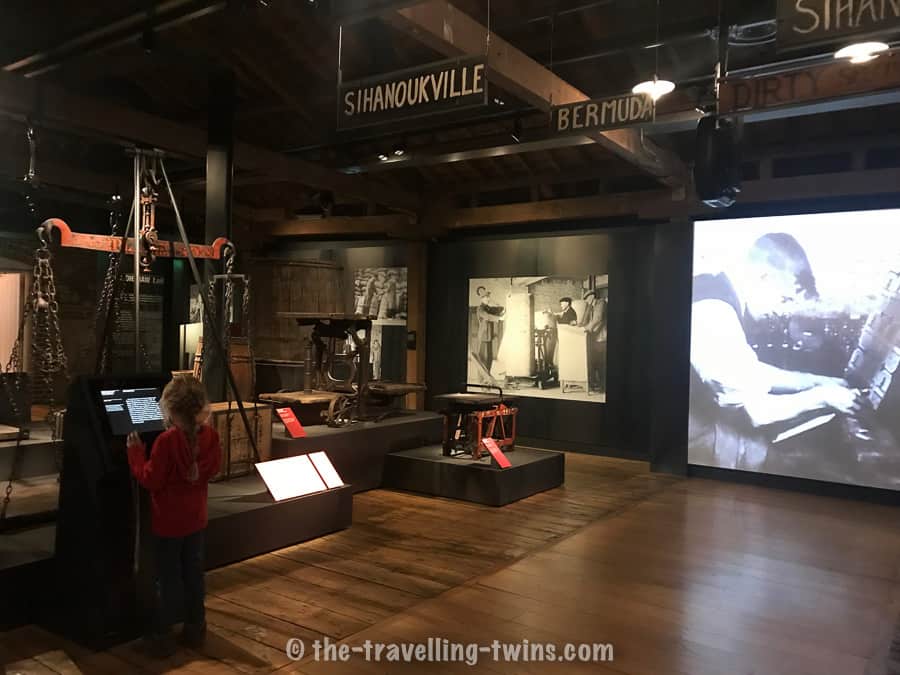
We were particularly interested to lean about the UK’s involvement in the slave trade triangle between London, Africa and the US.
The Maritime Museum, Greenwich
When my friend recommended a visit to the Maritime Museum as one of the best free museums in London. I was really surprised, what would we find there beside old Navy ships? But the Maritime Museum was a great hit, especially with my girls. Like the British Museum, this building is arranged around a central court which was given a high-tech glass roof in recent years. This museum is beautifully designed for a family visit.
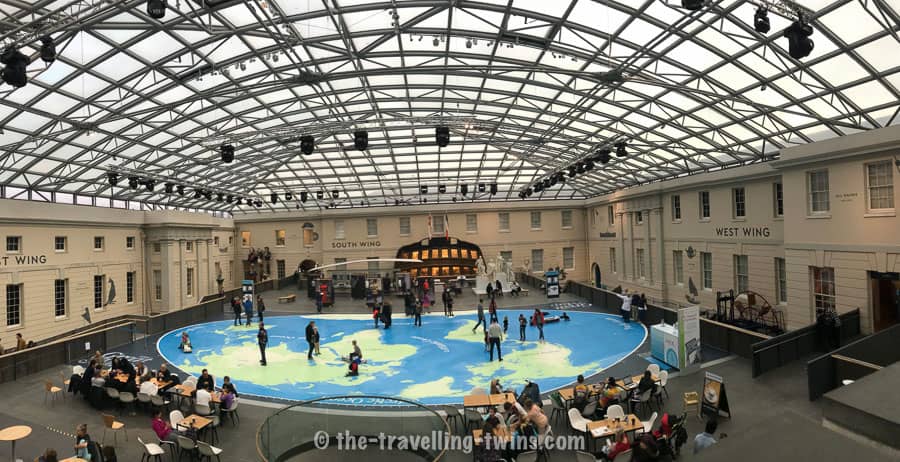
The girls were given an iPad console to navigate a ship. This was an engaging link between the historic exhibits and the story of Britain as a maritime island nation. The angle of this museum is complementary to that of the Docklands and sets London and the UK in its global context of discovery, trade and naval warfare, especially before the age of flight.
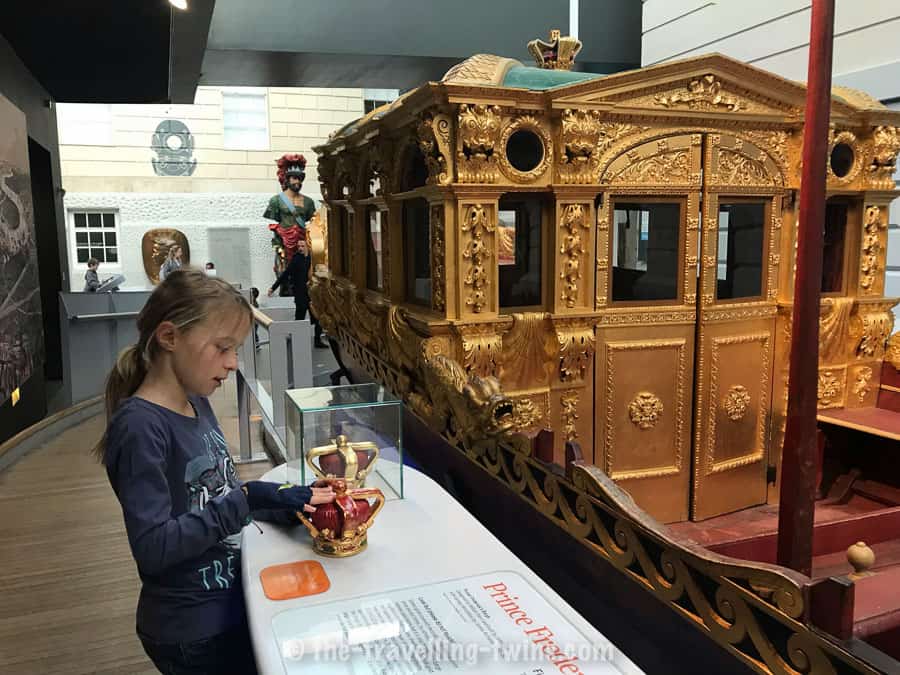
Greenwich Park – Royal Observatory, Cutty Sark and the Queen’s House
Situated between the Maritime Museum and the river is the Cutty Sark, the last of the tea clipper sailboats trading between India and Britain around the African Cape before steam power and the Suez Canal. It’s not free to go on board, but worth gazing at from the outside to imagine the romance and harshness of that tremendous journey.
The Maritime Museum is part of the largely incomplete grand plan of Greenwich Palace alongside the Queen’s House which was the first example in the UK of classical building design, consciously taking inspiration from the Italian Renaissance and specifically the work of Andreas Palladio. This building is the stylistic precursor of almost all of the central London as you see it today. It is free to enter and visit the exhibitions and interior.
Wander from there into Greenwich Park and grab a fantastic view of the London skyline looking back over the river. Sitting in Greenwich Park is the Royal Observatory. Strangely, entry to the Observatory courtyard is not free. You have to pay to see the little brass strip marking the Greenwich meridian line, although of course you have probably been crossing the meridian and walking along it outside the building for most of the day as you explored Docklands and Greenwich.
If you happen to be in the Park at lunchtime you might see a large red ball being hoisted up a spire on the Observatory’s roof. This ball has been raised at 12:58 and dropped again at 1pm as a time signal visible from the river over the centuries. From this signal, ships’ captains leaving London could synchronise their chronometers and then calculate their longitude from the angle of the sun as they crossed oceans.
South Kensington and Chelsea
South Kensington is much farther west – in fact a little west of the West End. Beyond Park Lane and south of Hyde Park/Kensington Gardens. Here are lined up three of the nations most famous museums conveniently placed in a row and just along the road from London’s most famous department store, Harrods
The Natural History Museum
Our kids enjoy visiting natural history museums around the world, but even among those, this one is special. You are welcomed into the vast neo-gothic hall by a blue whale skeleton. The biggest living animal replaced the diplodocus which was displayed in this hall until a few years back as a reminder that we have to consider our planet’s future, not just its past.
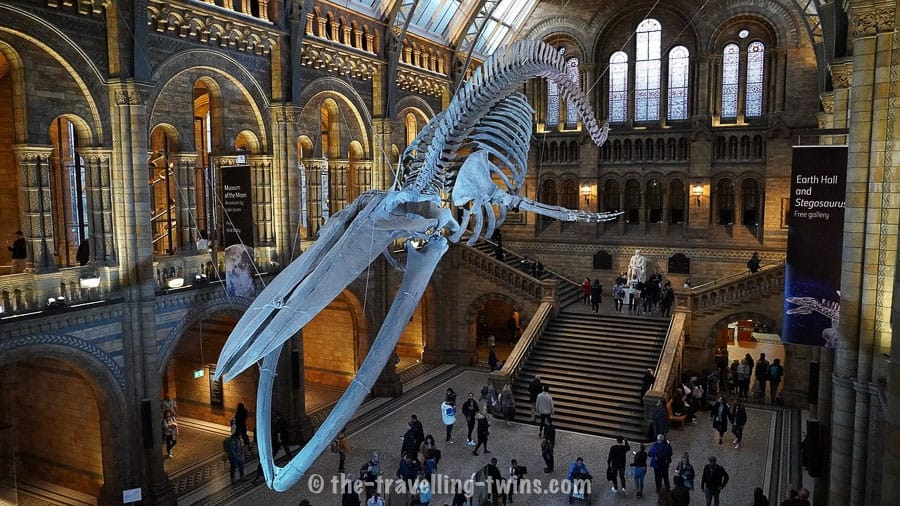
There are plenty of dinosaurs here though, they are just in another part of the museum, and of course they are in company with every other kind of animal and natural environment. Our girls had most fun ogling at the collections of creepy crawlies.
They always shy away from stuffed animals though – for them mammals should only come in two formats, live and cuddly, or soft-toy and cuddly. Stuffed and dead doesn’t do it for them.
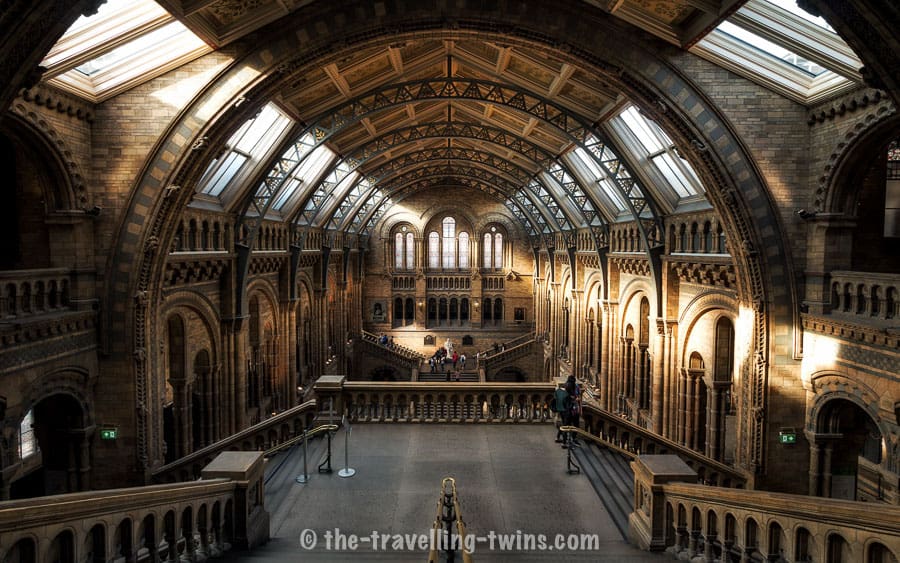
Having said that, there was plenty here that did enjoy, not least again surprisingly for me – rocks and stones! Another hit!
Open Hours: Opens daily from 10 AM to 5:50 PM
Closest Underground Stations: South Kensington
The Science Museum
All the Science Museum around the world is perfect for kids who have an interest in space travel, steam engines, modern technology, experiments, or transport.

Having said that, Nick was disappointed as he remembered this museum from his own childhood as being full of handles to crank, buttons to press and other hands-on physical things to play with. Now most of the interactive exhibits seem to be in the form of video screens with either keypads or touchscreen displays.
Lots of the exhibits are beautifully designed though, and it’s easy to lose yourself for a few hours here, starting with the industrial revolution (beautiful steam engines) through the space age (real spacecraft) and on to explore subjects as diverse as evolution and the internet.
Unfortunately, this is one museum where some of the best stuff is payable. You will need to buy a ticket for the WonderLab in order to participate in live experiments at the Chemistry Bar as well as to watch 3D IMAX movies about space travel and natural wonders.
Open Hours: Opens daily from 10 AM to 6 PM and closes December 24-26
Closest Underground Station: South Kensington
Victoria and Albert Museum – V&A Museum of Childhood
Completing our list of free museums in South Kensington is the Victoria and Albert Museum known usually as the V&A. It is the British national museum of art and design and it has more recently been specifically rebranding its image to be family friendly.
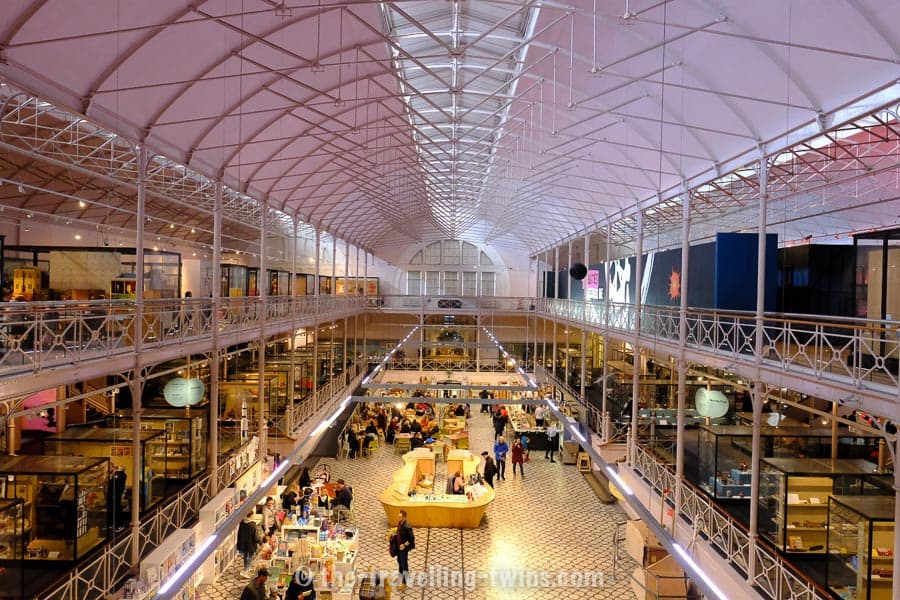
While there are neither dinosaurs nor flight simulators, the V&A hosts plenty of free events and activities, with loads of hand-on stuff for children scattered about the displays of historic art and design. The Museum of Children showcases children’s toys, costumes, games, and doll’s houses in imaginative hands-on galleries.
It was a great museum to show our kids the toys we played in childhood – including simple wooden toys, as well as more complicated toy cars, some with steering mechanisms. Big hits were an old rocking horse that the girls rode endlessly and a bald face with magnet and Iron filings. The one in the V&A was big, but I am happy to see that the normal version called Wooly Willie is still available today!
This was one Museum which does have great food options for kids too, though we chose to picnic in nearby Kensington Gardens.
Open Hours: Opens daily from 10 AM to 5:45 PM and on Fridays from 10 AM to 10 PM. The museum is closed on December 24-26
Closest Underground Station: South Kensington
South of South Kensington is Chelsea, an area famous in the late twentieth century for its “Sloane Rangers” a class of people known for driving their children to school through narrow city streets in large 4x4s while wearing clothes designed for shooting grouse on a wild moor. Here st the top of trendy King’s Road facing Sloane Square, you will find the Saatchi Gallery.
Saatchi Gallery
The Saatchi Gallery is one of only two privately owned establishments in this article. In 2010 Charles Saatchi stated that he would be giving his “enormously important” collection of modern art to the state. But to date the nation has yet to accept the offer, so this gallery still remains a very personal live collection.
The most fun thing about the Saatchi collection is the discussion it raises about modern art. These discussions have of course been running since the mid twentieth century, but the Saatchi effect took it up a level.
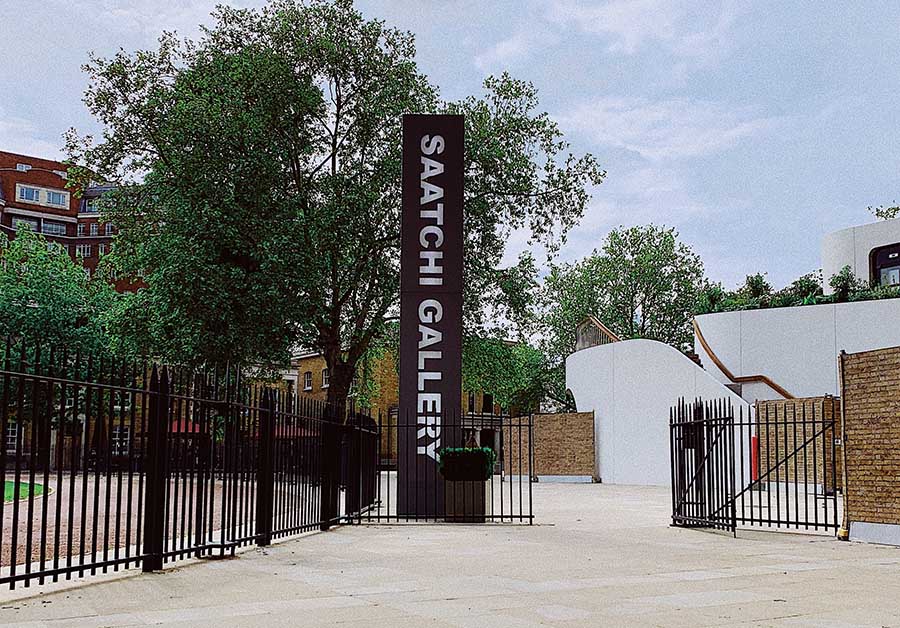
A fantastically wealthy and influential advertising mogul, (chosen by Mrs Thatcher amongst others to take care of her image) Saatchi had the power in the 1990s through his reputation and character to make unknown artists famous simply because he was buying their work. A dirty bed, a dead sheep, a stuffed shark and other items became the controversial conversation pieces of a generation, When Saatchi bought, the creator’s career was instantly made, and in some cases their fortunes too.
In 2010 Saatchi offered his collection to the Nation. The nation has not yet accepted the offer. And so, after thirty years or so, the heat is cooling and the gallery is a great place to visit and discuss the phenomenon of the Emperor’s new clothes with your family.
The spacious clean rooms allow parents with infants to visit the museum even with baby strollers.
Open Hours: Opens daily from 10 AM to 6 PM
Closest Underground Station: Sloan Square
Trafalgar Square
Slap bang in the middle of London, (actually in the City of Westminster) and famous for Nelson’s column and pigeons is Trafalgar Square. The backdrop to this iconic city square is a long building housing two national galleries.
The National Gallery
With over six million visitors a year London’s National Gallery sits in the top five art s museums worldwide. It houses a collection of about 2,300 paintings of all ages of which the impressionists are perhaps the most well known, including works by Pierre Renoir, Claude Monet, and Vincent Van Gogh.
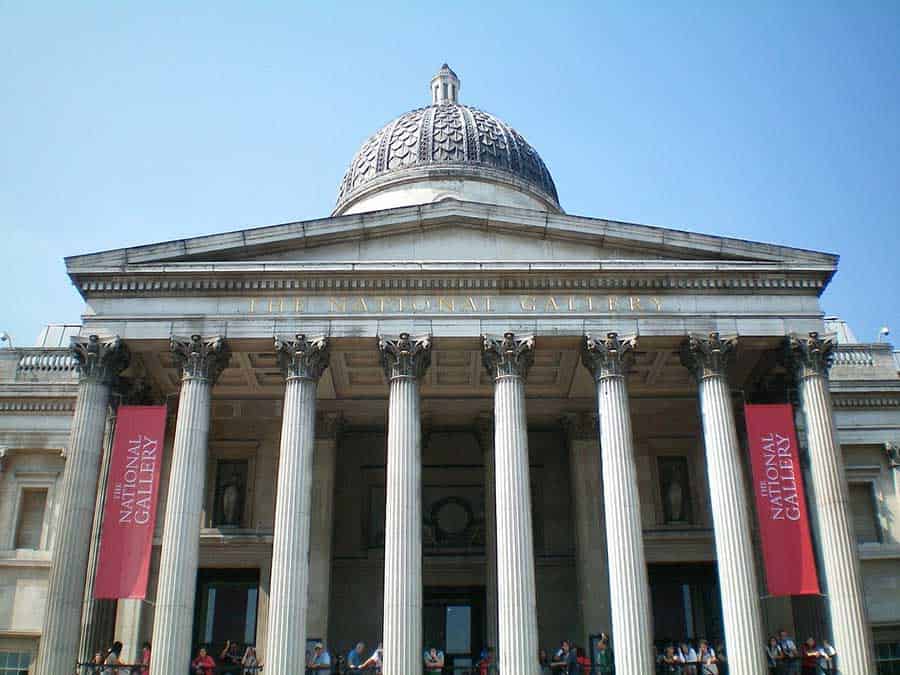
Open Hours: Opens daily from 10 AM to 6 PM and on Fridays from 10 AM to 9 PM. The museum is closed on December 24-26
Closest Underground Stations: Leicester Square and Charing Cross
London’s National Portrait Gallery
The National Portrait Gallery is in the same building as the National Gallery, but is accessible on the other side of the building through its own front door. It opened in 1856 as the first portrait gallery in the world. Today the gallery contains the most extensive portrait collection globally with about 200,000 works.
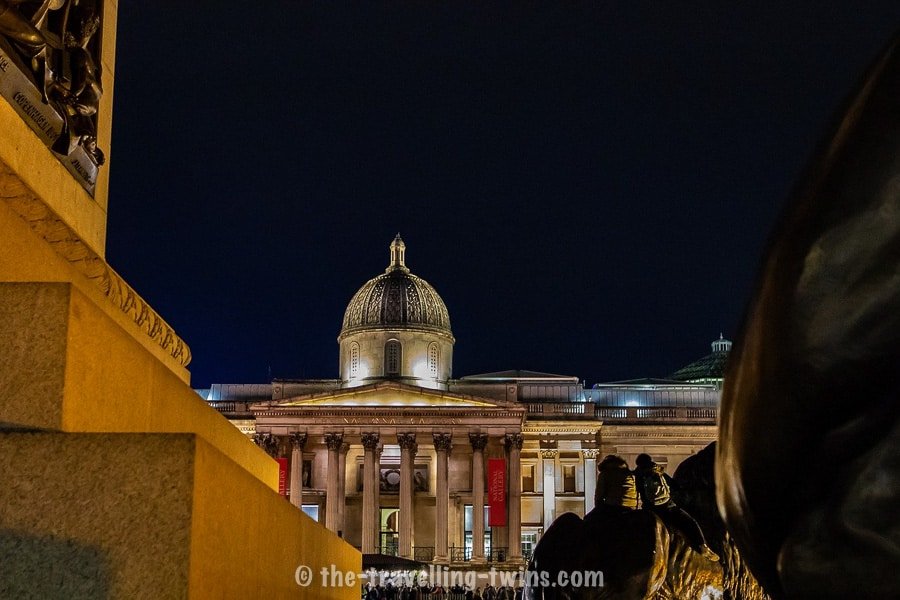
Apart from the predictable historical oil paintings of royalty in lavish costume, the gallery has many delightful modern characterisations of politicians, writers, and artists.
Open Hours: Opens daily from 10 AM to 6 PM and Fridays from 10 AM to 6 PM. It is closed on December 24-26
Closest Underground Stations: Leicester Square and Charing Cross
The South Bank
The South Bank of the Thames running from City Hall opposite Big Ben all the way to Tower Bridge in the east has been London’s centre of modern culture since London’s second Great Exhibition of 1951

To celebrate the turn of the third millennium two new landmarks were inaugurated here. The Millennium Wheel now known as the London Eye started a worldwide fashion of copycats from Las Vegas to Singapore and even Dubai
The other great millenium project on the South Bank was the refurbishment of an enormous disused Art Deco power station. This building would now house the burgeoning collection of modern art from London’s Tate Gallery in Pimlico.
Tate Modern
Tate Modern Museum is the sixth most visited art museum on earth and boasts some of the best modern art of the twentieth and twenty-first centuries. The museum organizes its collection by theme and not chronologically as many other museums.
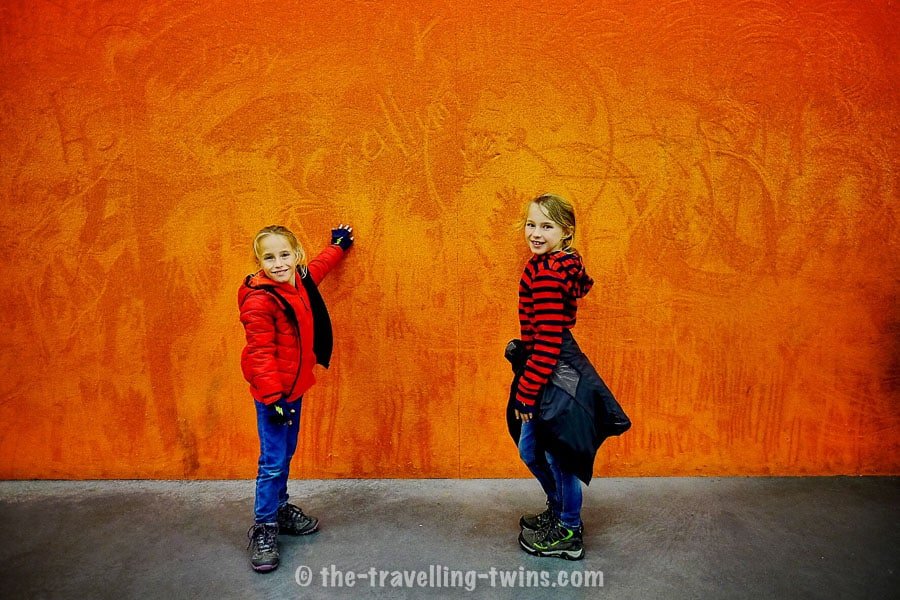
Exhibitions change frequently and most of the displays come from the Tate Collection.
Tate Modern is a children-friendly museum, stating on its website that women are welcomed to nurse wherever they feel comfortable.
Open Hours: Opens daily from 10 AM to 6 PM and Fridays and Saturdays from 10 AM to 10 PM
Closest Underground Station: St. Paul’s and Southwark
Forest Hill
Much farther out from central London and a destination in it own right is the Horniman Museum and Gardens
Horniman Museum and Gardens
This museum was opened in 1901 to show the collection of the Victorian tea entrepreneur Frederick Horniman. It remains now as a charity in private control.
Register at the front desk for a daily workshop for children, other things the kids particularly enjoy are the garden, a spectacular conservatory, farm animals, and a kids music laboratory..
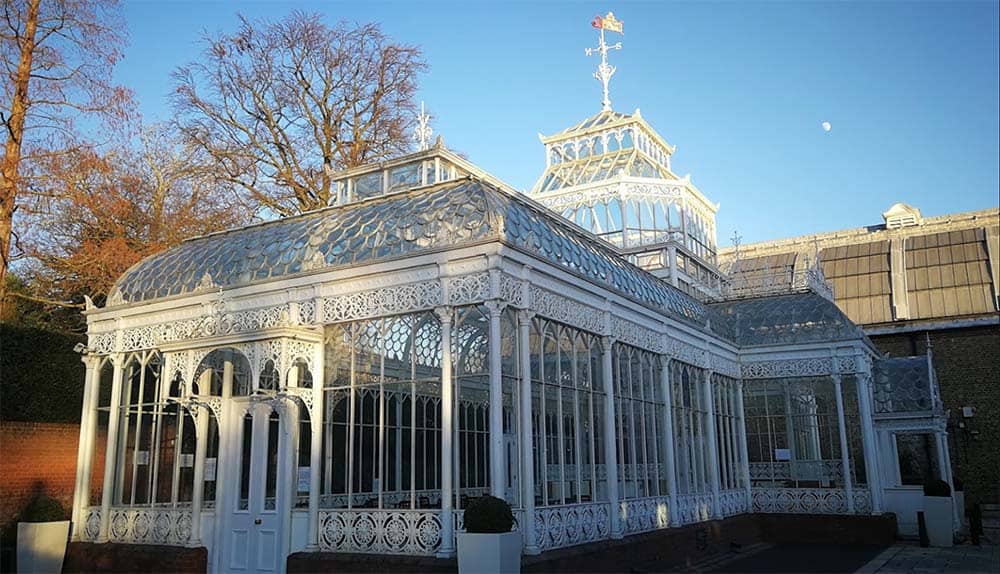
Open Hours: Opens daily from 10 AM to 5:30 PM and is closed on December 24-26
Final Thoughts about Free family-friendly museums in London
Many are not aware that London can be a perfect destination for budget travelers. Many of the popular attractions in the city are free as you have seen in this article and can make for an unforgettable weekend getaway for families with children.
Free Kids Museums in London – Pin for later

Privacy Policy Disclaimer
This website uses affiliate links for income and support.
If you like our website, please consider using these links. You will be directed to the vendor, and we will get a small commission on your purchase price at no increased cost to you.
We have researched facts stated here as far as practicable but please check anything critical before committing your time and money. We do not claim any special knowledge or expertise, and we are not consultants for our readers.